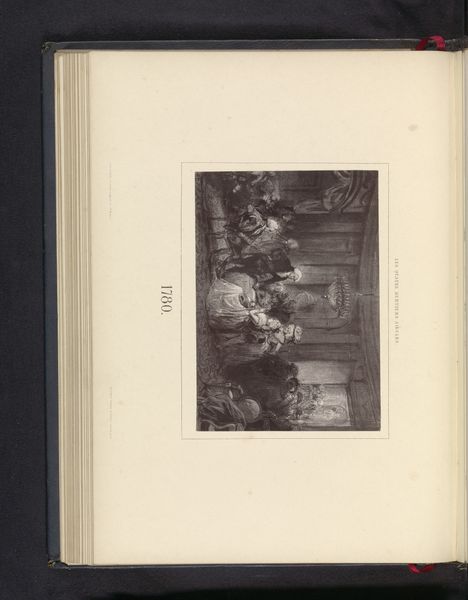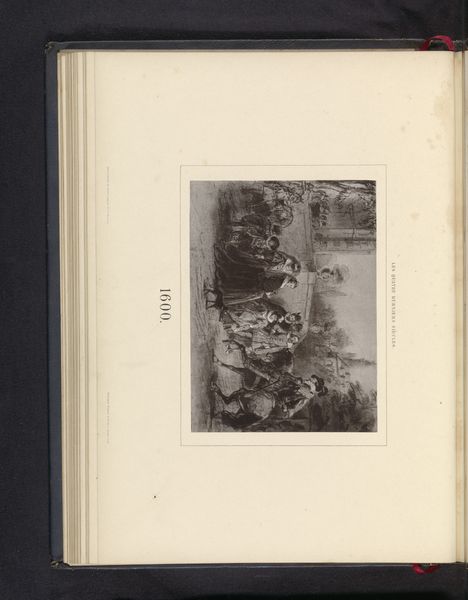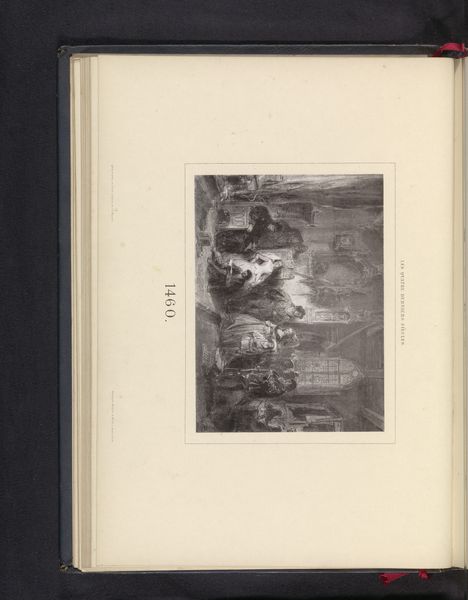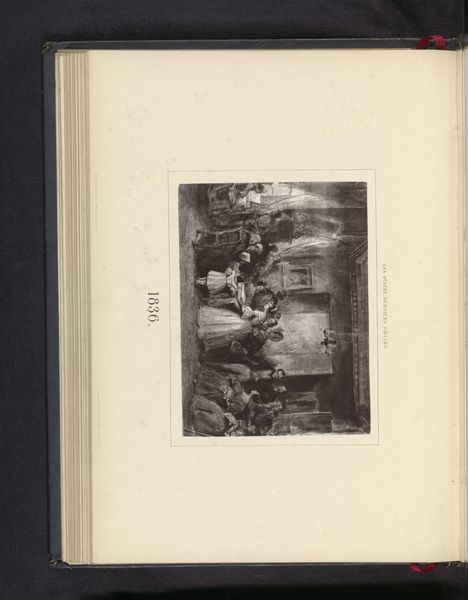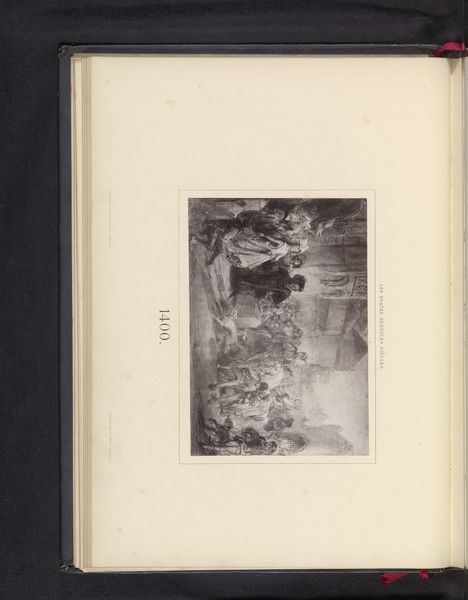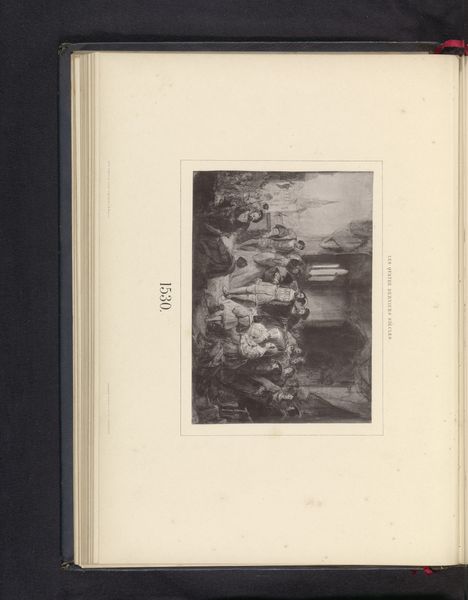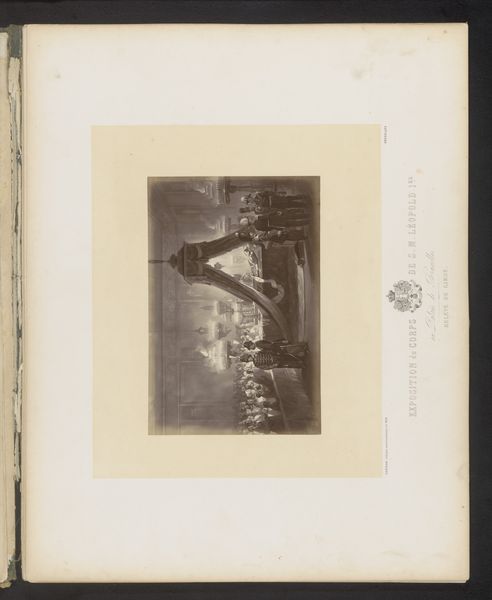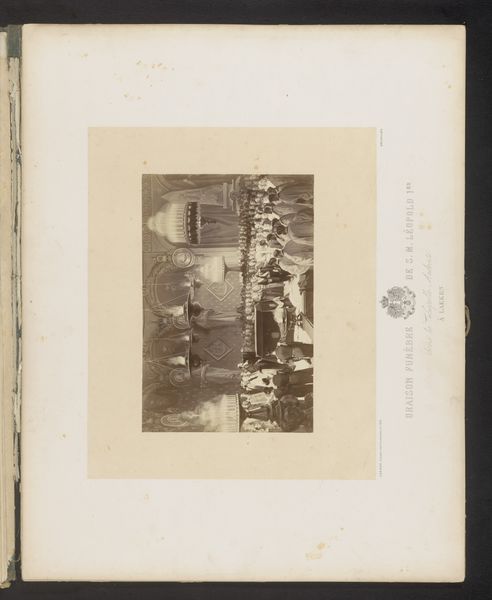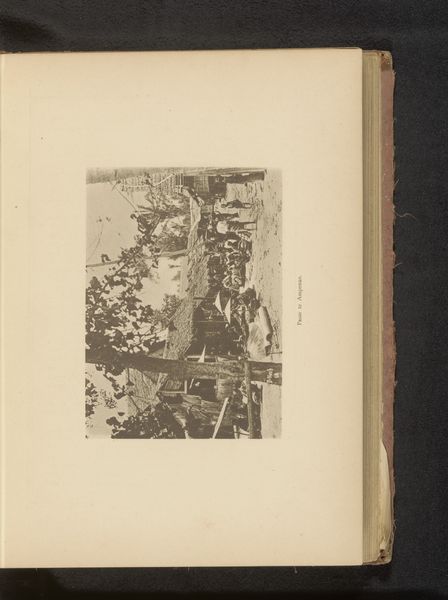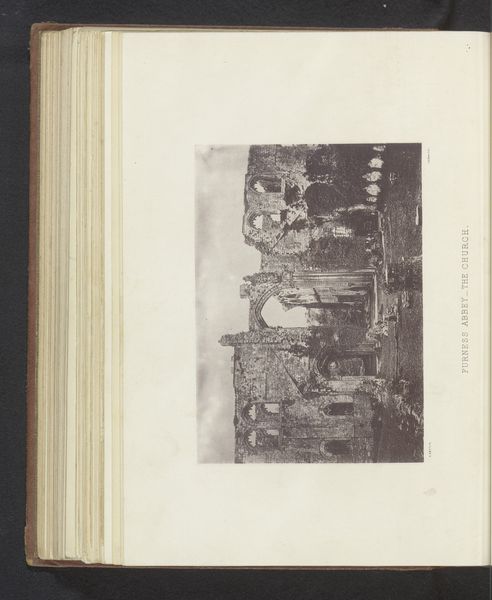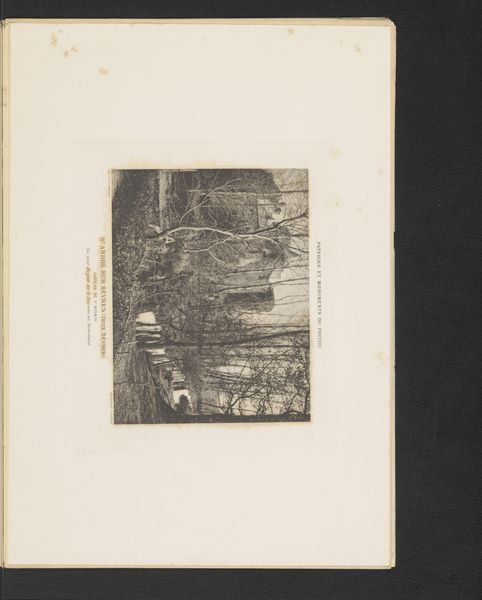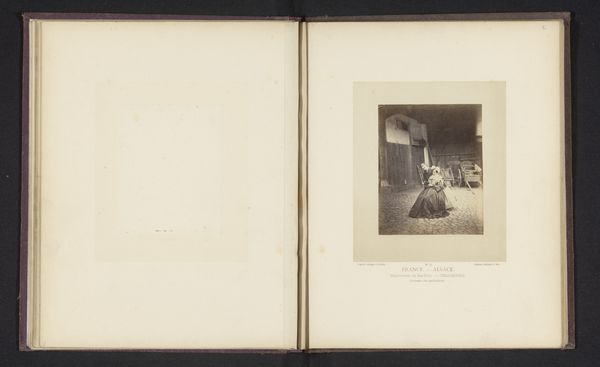
Fotoreproductie van een tekening, voorstellende edelen in een interieur before 1873
0:00
0:00
print, engraving
# print
#
genre-painting
#
history-painting
#
academic-art
#
engraving
Dimensions: height 136 mm, width 188 mm
Copyright: Rijks Museum: Open Domain
Curator: At first glance, I see a stage, heavy costumes, maybe a negotiation or dramatic revelation unfolding—there's certainly tension in the posture of these figures. Editor: I’m drawn to the way this print, an engraving made before 1873 after an unknown drawing, seems to capture a very specific type of 19th-century historical romanticism, focusing on idealized or dramatic past events with figures arranged almost theatrically. Curator: Exactly, and that’s key! This kind of imagery reinforces the authority and continuity of nobility by placing them in heroic or symbolic narratives. I'm especially struck by the grouping of figures, their expressions… the way they are directed at each other in an attempt to form emotional response in the viewer, don't you think? Editor: Absolutely. What strikes me about it is the absence of named artists. It's attributed to an "anonymous" maker and titled, rather neutrally, “Fotoreproductie van een tekening, voorstellende edelen in een interieur"—“photographic reproduction of a drawing, depicting nobles in an interior". That signals the work as a copy, disseminating ideas about history and class in a way that minimizes individual artistic vision, furthering that aim to showcase class hierarchy, not personal expression. Curator: The artist or draftsman isn’t centered, the focus is placed clearly upon the figures. That act of replicating the drawings turns the subjects into readily available commodities. Editor: That reproduction contributes to how historical events are interpreted and what's being communicated visually. These kinds of works provided accessible, visual markers of identity, nobility and national narrative that supported certain hierarchies and historical accounts while obscuring other ones. Who got left out of this heroic vision? Curator: Always a vital question to pose when you look at genre or historical painting. It forces us to look at not only what it offers us on a visual level but also what this genre excludes or takes for granted as standard. What it doesn’t include becomes symbolic. Editor: Indeed. Reflecting on it, this print speaks volumes about 19th-century power structures. Curator: Absolutely; seeing these power structures mirrored back through visual symbols brings a greater awareness to their existence even in our present day.
Comments
No comments
Be the first to comment and join the conversation on the ultimate creative platform.
